
Our Anzacs
"LEST WE FORGET"
They shall grow not old....as we that are left grow old
Age shall not weary them, nor the years condem
At the going down of the sun, and in the morning, we will remember them

Anzac History
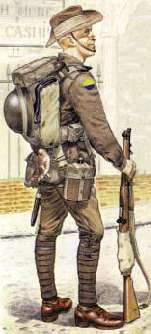
As a dominion she was automatically and legally committed; but in any case Australian sentiment was overwhelmingly pro-British, and Andrew Fisher spoke for the whole country when he promised to support her 'to our last man and our last shilling.
Australia's first acts of war were to destroy German wireless stations at Rabaul, Yap and New Guinea, and to occupy German New Guinea and nearby islands including New Britain, New Ireland and Bouganville. Resistance was weak and casualties were few, meanwhile Brigadier-General W.T.Bridges had begun organising a volunteer army for overseas service, to be known as the Australian Imperial Force and now famous in history simply as A.I.F. The response exceeded all his hopes and in three months a complete first division of 20,000 men had been enlisted and partly trained and was ready to embark. It was joined by two brigades from New Zealand, and on 1 November the combined contingent sailed from Albany, W.A. in thirty-eight transports, escorted by the Australian light cruisers Sydney and Melbourne and a British and a Japanese cruiser.
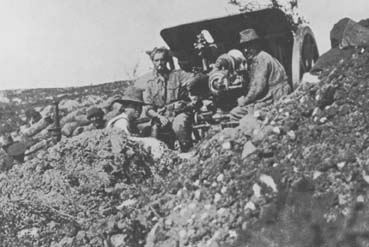
Its destination was England, via Suez. Nine days later a wireless station at Cocos Is. in the Indian Island, signalled that it was being attacked by a German cruiser, Emden.
HMAS Sydney left the convoy and in a classic running battle, disabled the enemy ship and ran her aground. Owing to a change of plan, the troops were disembarked at Alexandria to complete their war-training in Egypt. Here they were joined by a second mixed contingent and united as the Australian and New Zealand Army Corps (ANZAC) with General W.R.Birdwood in overall command.
As a part of Allied strategy it was decided, early in 1915, to attack Turkey through the Dardenelles and so provide a safe sea-link with Russia.

The First Lord of the Admiralty, Winston Churchill, was sure the British Navy could force a way through the narrow passage but the attempt was defeated with heavy loss. The operation then became a military one against a forewarned and powerful enemy. On 25th April 1915 Anzac, British and French troops stormed ashore on the peninsula of Gallipoli against fierce opposition from five Turkish Divisions.
After a day of chaotic, heroic and bloody fighting the ANZACS had established a precarious foothold at what became known as ANZAC Cove and during the next two days they held on grimly against continuous and savage counter-attacks. Then both sides paused to lick their wounds and the ANZACS dug in.
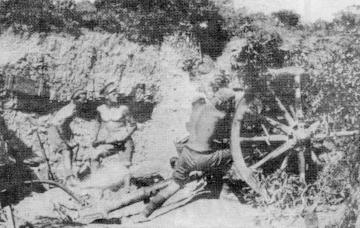
During the next few months weeks of stalemate were interspersed with days of bitter fighting, with appalling casualties on both sides. From the start it was apparent that the campaign must fail - indeed many thought it should never have been launched - and in December evacuation of the peninsula was ordered. This was carried out with such skill that the enemy was completely deceived and by 8 January the last Allied troops had left Turkish soil.
In this futile holocaust of eight months Australian casualties had totalled 8,587 dead and 19,367 wounded; but from defeat the ANZACS had emerged as probably the best assault troops in history. One thing they never lost was their sardonic sense of humour and as they returned to Europe, battle-shocked and weary they sang:
"We are the ragtime army
The A.N.Z.A.C.
We cannot shoot, we wont salute
What bloody use are we?"
Massive reinforcements arrived to fill their decimated ranks. By April four divisions were in France and two mounted divisions, including the famous Camel Corps, remained to protect the Suez canal and challenge the Turks in Sinai and Palestine.
An Australian Flying Corps had been formed and had already seen action in Mesopotamia.

Breaker Morant
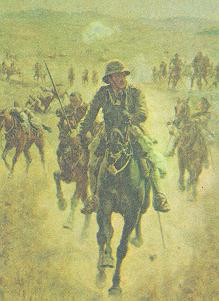
George Whitton went to prison on the Isle of Wight, and after serving nearly three years of his life sentence he was released in haste and secrecy after petitions and a great deal of political pressure had been brought to bear.
Major JF Thomas of Tenterfield was disgusted at the whole miserable affair, and wrote of his conviction that the executions were for international policy reasons.
Kitchener, during his visit to Australia in 1910 was asked to unveil a memorial to the Boar War Dead at Bathurst in New South Wales. It is recorded that he refused to unveil the memorial to those volunteers unless the name of Lieutenant Peter Handcock was removed from the roll and to the shame of the men who ordered it done, it was removed. It was replaced afterwards, centrally placed on a separate strip of bronze.
Since their execution no Australian has been tried on a capital charge by a British Army Court.
27th February 2001 during the centenary of Australia's Federation, 99 years to the day since they were executed, a huge jumbo jet flashes past the Sydney Harbour Bridge and the Opera House on its return from South Africa with the bones of the Breaker and his mate on board.
When the last rousing gallop is ended - and the last post and rail has been jumped And a cracked neck that cannot be mended - shall have under the yew-tree been dumped.. Just you leave him alone in God's acre and drink in wine, whisky or beer,
"May the saints up above send The Breaker a horse like good old Cavalier."
Over the next few years people such as renowned Bush Poet "Jim Haynes" along with others in the area, will be making sure this dream does not falter. The Breaker will be put on trial in the town of Tenterfield (Australia) with a presiding retired Judge.
The prosecution and the defence will be selected from within Australia's top fifty legal firms on invitation. The transcripts of the original trial will be sourced from the Ministry in London under the Freedom of Information Act.

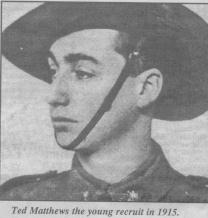
Has died aged 101.
"His death removes the last New South Wales link with the most defining moment in Australia's history" Prime Minister John Howard said. "He was the last survivor of the men who went ashore in the first Gallipoli landing at dawn on April 1915."
Mr Matthews died peacefully in an RSL nursing home at Collaroy in Sydney. He celebrated his 101th birthday on Remembrance Day chatting to John Howard about the stupidity of politicians and the importance of history. He blamed the Gallipoli fiasco on "bloody fools" of the British Empire and believed war was pointless. Mr Matthews was born at Leichhardt on November 11, 1886. He left school at 14 to become a carpenter. He was 17 when his knowledge of morse code got him an early entry to 1st Division Signals. "I signed up when I was young and impulsive and stupid" Mr Matthews said. He was 18 when he landed at Gallilopi.
"We landed before light and bodies lay everywhere before we knew it," he said. He would not have seen his 19th birthday if he had not been carrying a thick pocketbook his mother gave him. It bore the brunt of Turkish shrapnel in the chest a few hours after landing. Not only was he one of the first ashore at Gallilopi, but he was one of the last to leave after the aborted eight month campaign that left 11,410 Anzacs dead. He saw out the entire four years of WWI later serving in France and Belgium.
He outlived two wives and a daughter. One daughter, nice grandchildren and several great grandchildren survive him.

"Rememberance Day"
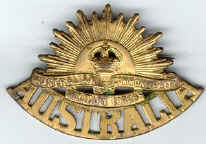
On the 11th hour of the 11th day of the 11th month we, the people of Australia, stand and observe two minutes' silence for our war dead - and those missing in action, during World War I. We pause to remember their supreme sacrifices - carried out to keep this great nation free and at liberty from any invading forces.
We remember the return of the body of the "Unknown Soldier" laid to rest in the Canberra War Memorial, typifying all those who also rest in unmarked graves wherever they may be.
We remember the Anzac heroes as well - and those who were left behind in World Way II, Tobruck, New Guinea, Phillipines etc.
Also to another hero of war THE BREAKER MORANT - whose bones will be returned to Australia in the year 2000.

This page has been visited times.
"Click to go back"
Back
![]()